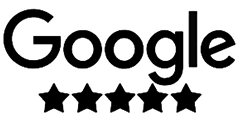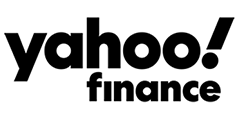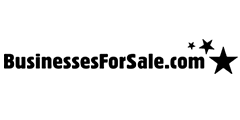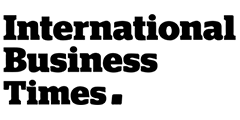Blog
What exactly is a P&L statement, and why is it crucial for your business? Let’s dive in and explore this vital financial document.

June 3, 2024
By
Kamran Awan
Category
Business
Running a business is like navigating a ship; you need the right tools to steer it in the right direction. One of those essential tools is the Profit and Loss (P&L) statement. But what exactly is a P&L statement, and why is it crucial for your business? Let's dive in and explore this vital financial document.
What is a Profit and Loss statement?
A Profit and Loss statement, often abbreviated as P&L, is a financial report that summarises the revenues, costs, and expenses incurred during a specific period, usually a fiscal quarter or year. It shows the ability of a business to generate profit by increasing revenue, reducing costs, or both.
Components of a P&L statement
- Revenue: The total income generated from the sale of goods or services.
- Cost of Goods Sold (COGS): The direct costs attributable to the production of the goods sold.
- Gross Profit: Revenue minus COGS.
- Operating Expenses: The costs required to run the business operations.
- Operating Income: Gross profit minus operating expenses.
- Net Profit: The final profit after all expenses have been deducted from revenue.
The importance of a Profit and Loss statement
Financial health indicator
A P&L statement provides a snapshot of your business’s financial health, showing whether you are making a profit or a loss. It helps you understand the financial viability of your business operations.
Decision-making tool
This statement is critical for making informed business decisions. By analyzing your P&L, you can identify areas where you are spending too much, where you can cut costs, and where you can invest more to grow your business.
Compliance and reporting
For many businesses, especially corporations, creating a P&L statement is a legal requirement. It ensures compliance with tax laws and financial reporting standards.
Creating a Profit and Loss statement
Gathering financial data
Start by collecting all the necessary financial data, including sales records, receipts, and expense reports.
Structuring the statement
Organise the data into the main components of a P&L statement: revenue, COGS, gross profit, operating expenses, operating income, and net profit.
Analysing the statement
Once the P&L statement is prepared, analyse the data to identify trends, strengths, and areas for improvement.
Revenue: The starting point
Revenue is the total income from sales before any expenses are deducted. There are two types of revenue:
- Operating Revenue: Income from the core business activities.
- Non-Operating Revenue: Income from secondary sources, like interest or investments.
Understanding Cost of Goods Sold (COGS)
COGS represents the direct costs tied to the production of goods sold by the company. Understanding COGS helps in pricing products appropriately and managing inventory efficiently. COGS can be calculated using the formula below:
COGS = Opening Inventory + Purchases During the Period - Closing Inventory
Gross Profit: Measuring efficiency
Gross profit is the amount left after subtracting COGS from revenue.
Gross Profit Margin = (Gross Profit / Revenue) x 100
A high gross profit margin indicates efficient production processes and cost management.
Operating Expenses: The running costs
Operating expenses are the costs incurred in the day-to-day running of a business. There are two main types of operating expenses:
- Fixed Expenses: Costs that do not change, like rent and salaries.
- Variable Expenses: Costs that vary with production levels, like utility bills.
Operating Income: The core business earnings
Operating income is the profit earned from regular business operations. It shows the efficiency of the business’s core activities without the influence of external factors. Focus on increasing revenue and reducing operating expenses to boost operating income.
Net Profit: The bottom line
Net profit is the final amount after all revenues and expenses have been accounted for. Net profit is a key indicator of overall business success and financial health.
Strategies to improve Net Profit
- Increase Sales: Expand market reach or introduce new products.
- Reduce Costs: Cut unnecessary expenses and streamline operations.
- Improve Efficiency: Invest in technology to automate processes.
Analysing a Profit and Loss statement
Key metrics to consider
- Net Profit Margin: Indicates overall profitability.
- Operating Margin: Measures efficiency of core operations.
- Gross Margin: Reflects production efficiency.
Conclusion
Understanding and utilising a Profit and Loss statement is essential for any business aiming for long-term success. It provides crucial insights into your financial health, informs strategic decisions, and ensures compliance with financial reporting requirements.
FAQs
Q: What is the difference between a balance sheet and a P&L statement?
A: A balance sheet provides a snapshot of a company's assets, liabilities, and equity at a specific point in time, while a P&L statement shows the company's financial performance over a period.
Q: How often should I prepare a P&L statement?
A: It’s recommended to prepare a P&L statement quarterly or annually, but monthly preparation can provide more timely insights.
Q: Can I create a P&L statement myself?
A: Yes, you can create a P&L statement using accounting software or spreadsheets, but consulting with an accountant can ensure accuracy.
Q: What software can help with P&L statements?
A: Popular accounting software like QuickBooks, Xero, and FreshBooks can help create and manage P&L statements.
Q: How can I use a P&L statement to attract investors?
A: A P&L statement can demonstrate your business’s profitability and growth potential, making it an essential document for attracting investors.
To find out more and how we can help you launch your own Digital Agency and stand out online, please contact a member of our team.
Share this Post






















